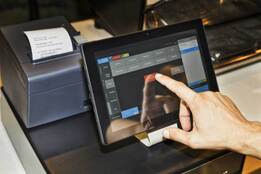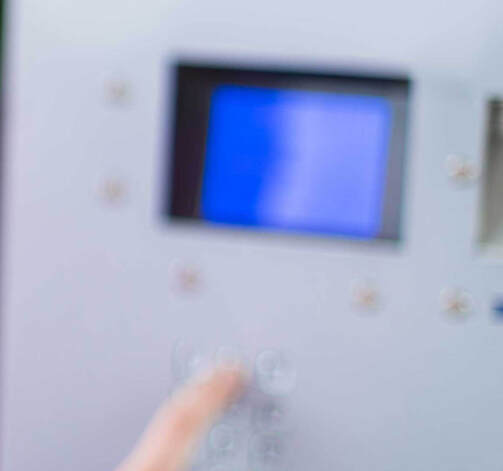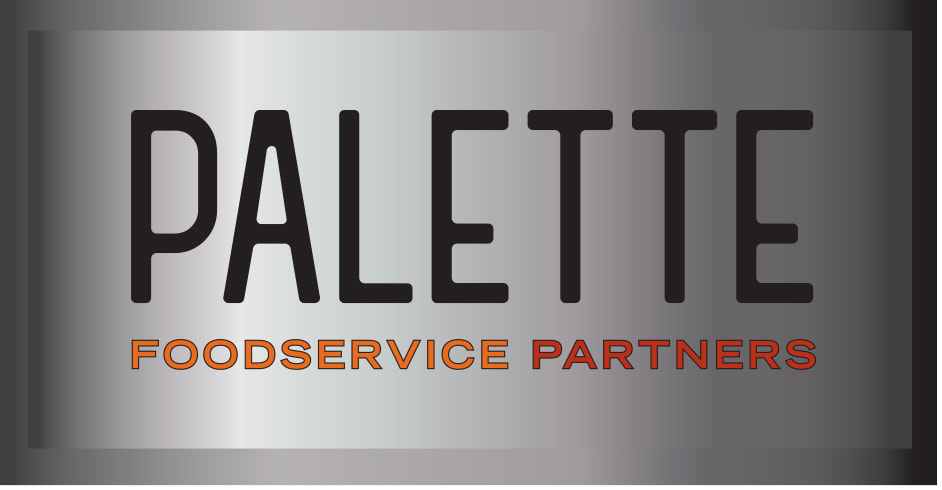 While it’s true that more restaurant operators are automating front- and back-of-house processes right now, they are also focusing more on how they can make the most of their staff – and keep the people they have. According to Nation’s Restaurant News Intelligence, this is the top priority for operators. It ranks higher for them than reducing labor costs, as well as streamlining both back- and front-of-house operations. The labor shortage of the past few years has required operators to adopt technology that supports employee retention efforts. That includes taking such steps as digitizing the onboarding and training process, automating scheduling, and adopting labor-enhancing tools to help them deliver quality service (as opposed to bringing in technology designed to replace human labor). This is a beneficial talking point for operators managing staff. Regularly collecting feedback from staff about their pain points can help you identify where technology might help lighten their load and enable them to focus on guest-facing work. It may even help you keep them from moving on to a different job.  If you aren’t currently using tech tools to manage your team’s hours, profits are likely hiding in your schedule, since having even one extra person on a shift can make a noticeable impact on your bottom line. In addition to using data-based forecasts to determine ideal staffing levels, scheduling software has the positive ripple effect of reducing the time a new manager needs to spend overseeing staff scheduling and getting it right. This, in turn, demonstrates to staff that you care about maintaining an accurate schedule – so when staff are scheduled, they are needed, and when there are extra shifts available for people to pick up, that is made clear and it’s easy for them to take them on.  SpotOn, the restaurant software and payments company, recently announced in its State of Restaurant Tech Report that the top challenges operators are facing in the next six months are rising costs, operational complexity and labor management – all challenges that consume many hours of an operator’s time. Labor management alone, according to the report, takes up more than 16 hours of a manager’s time each week. The time spent can be deceiving: An individual task like verifying staff clock-in may not take up much time on its own, but the hours add up. When you consider your top challenges in the coming months, do you know how much time you’re spending on what? Assess your biggest time eaters – and understand how much each task takes relative to others. There may be an easy tech-driven fix that can help you remove some of the burden from your staff and allow you to focus more time on tasks that drive business and cut costs.  Restaurants that use robotic chefs to prepare food and AI to take orders tend to generate breathless headlines, but as recent news from McDonald’s implies, operators may best handle the strains of labor inflation with mundane restaurant tech for the time being. McDonald’s CEO Chris Kempczinski acknowledged recently that automation wouldn’t be a “silver bullet” to solve the brand’s problems with labor inflation. (Restaurant Dive reported that its tests of drive-thru voice ordering were only 80 percent accurate, falling short of the 95 percent accuracy it sought.) Instead, the brand is focusing on customer data to make staffing decisions and reduce labor demand in its stores – something well within the reach of brands far smaller than the likes of McDonald’s. If you’re struggling with the challenges of labor inflation, harnessing your data may reveal some low-tech changes you can make to ensure you have the optimal number of staff at a time, as well as the ones who provide the highest levels of guest satisfaction.  For most people, a smartphone is like an extra appendage that makes life a bit easier and more convenient. Having your employees manage their schedules via smartphone app is one small way to make their work lives easier and avoid burnout. If you’re not already using team apps and digital scheduling tools to manage your staff’s comings and goings, consider doing so as you get organized for 2022. They can help managers plan optimal scheduling based on sales forecasts and enable employees to check their schedule or swap a shift on the go.  Amid the labor crunch, restaurants have been facing a lot of upward pressure on their wages lately. As of May, 30 states, the District of Columbia and forty-five localities have set minimum wage rates above the federal level. But at the same time, many restaurants likely are not making best use of the tools they have on hand to better manage their labor costs and gain as much as possible from them. According to research from TouchBistro, 39 percent of restaurant operators are not using their POS to view labor reports. These reports can help you identify when you are overstaffed in your kitchen and dining room, which staff are successfully upselling most frequently and making customers the happiest, and which staff may be stealing from you. All of this can ensure you always have the right number of people on hand for a shift, that you’re rewarding and developing the right people, and that you’re quickly identifying sources of theft. It may even give you some wiggle room to raise your wages. Even in more normal times, there is often waste lurking in a restaurant’s labor structure. You might have too many or too few employees on hand to serve customers or close for the night, or simply have too many occasions when your staff have idle minutes between tasks. Using tech to manage your labor isn’t about replacing your people with machines, but about accumulating evidence to demonstrate what labor is required to complete various tasks and then ensuring you deploy the ideal number of people to execute those tasks. You may feel that after many years running a restaurant, you have a good gut feel for how many people you need and when – but you might be surprised by the hidden waste that tech can reveal to you. (Noodles & Company learned recently via the use of HotSchedules, for example, that having five or six employees handle closing-shift duties was taking one hour, while the same duties took just 45 minutes when they scaled the number of closing-shift staff down to four people.)
If there were ever a year to ditch the paper, this would be it. From your inventory management to your menu to your employee training, tech tools are helping operators eliminate paper processes and their inefficiencies. Perhaps the biggest benefit of making the switch is real-time management: Knowing your inventory shortfalls as they happen can help you adjust your digital menu to substitute an item or promote a new special on the spot. Being able to inform your staff of day-to-day changes in operating procedure electronically – and ensuring compliance in real time – is especially crucial now as COVID-19 infections affect how restaurants can serve guests. Ask Team Four how you can eliminate any paper processes that are holding you back this year.
Consumers don’t consider technology to be an eliminator of jobs but rather a means of improving convenience – and restaurants are investing in more of such customer-facing technology solutions this year. These were key tech-related takeaways from the National Restaurant Association’s latest state-of-the-industry report. When it comes to customer-facing tech, kiosks and other self-service technology still pay dividends. Their biggest benefit may be speed – by visibly reducing congestion and automating orders, they expedite the order process and shorten lines – but this technology is also winning consumers over for its ability to customize. The proof is in the payment: The convenience that kiosks provide can lead guests to spend 15 to 20 percent more per order, according to Pymts.com. #restauranttech
What if running a profitable restaurant became less about analyzing databases and spreadsheets and more about following AI-generated directions? That’s increasingly becoming a reality for some restaurants. In a recent roundup from Modern Restaurant Management about major disruptions to expect in the coming decade, AI applications were among the major changes industry insiders expect. David Bloom, chief development and operations officer for Capriotti’s, sees increasing potential for video to work hand-in-hand with AI – using facial recognition to identify guests and connect them with loyalty programs, reducing theft by video monitoring, and improving employee performance by monitoring their actions and providing on-the-spot upselling and service advice. #restauranttech
|
Subscribe to our newsletterArchives
July 2024
Categories
All
|







 RSS Feed
RSS Feed